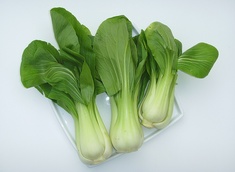
Eat More Vegetables
Last updated: Tuesday March 8th, 2022
Report this blog
The amount of vegetables consumed by the West are alarmingly low. A piece of steak with potato (fries or mash) on the side is in no way a healthy and balanced diet. By contrast, most Asian would consume much more vegetables, and green leafy vegetables are daily staples in Chinese meals. Beside the obvious health issue of eating too much meat and not enough vegetables, meat production has serious environmental impact and is not sustainable (read my previous blog).
I think one of the reasons why vegetable consumption is so low in the West is the limitation on variety, especially green leafy vegetables (I can only think of lettuce, spinach, kale and watercress on top of my head). There are so many other Chinese vegetables that are very easy to cook, nutritious and tasty, and here in this blog I am going to introduce few common ones to the Western audience.
Choy Sum
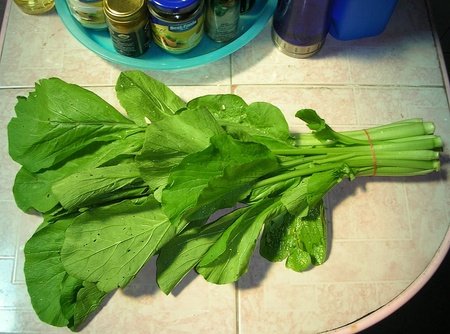
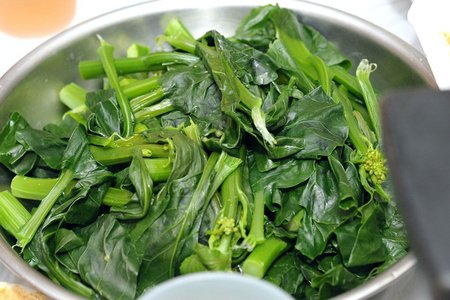
Choy sum (literally "vegetable heart") or Chinese flowering cabbage is the most common green vegetable in a Chinese meal. It can be easily distinguished by the little yellow flowers at the end. Like most other Chinese vegetables, it is eaten cooked and can be boiled (if you are lazy) or stir fried. In fact, I'd say the hardest part of cooking any Chinese vegetable is to wash the soil and dirt off them before cooking, and you can soak them in water first. Then just cut them into shorter pieces, get a pot with half a cup of boiling water, add some salt and oil, few pieces of sliced garlic and/or ginger (if preferred), put the vegetable in, close the lid and let it cook for a minute or so until it's soft and that's it. If you like it tastier, you can also stir fry them and sometimes together with beef or other meat.
Bok Choy
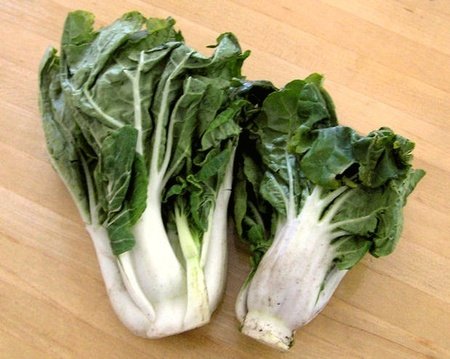
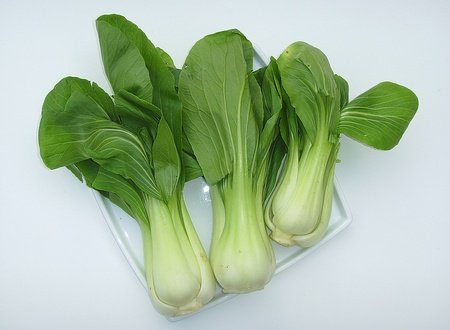
Another very common Chinese vegetable is bok choy (or pak choy, pok choy, literally "white vegetable"). There are few varieties of bok choy, the most common one is the baby bok choy which is nowadays commonly seen in Western cuisine as a side dish. Again it is cooked similarly to choy sum (boil or stir fry), and the hardest part is to wash the soil off the stems.
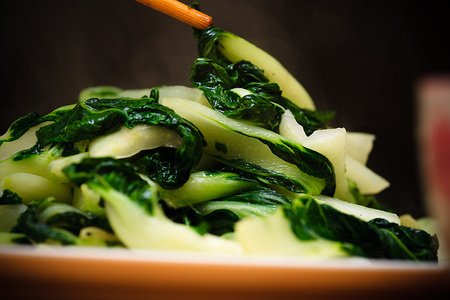

Chinese Cabbage
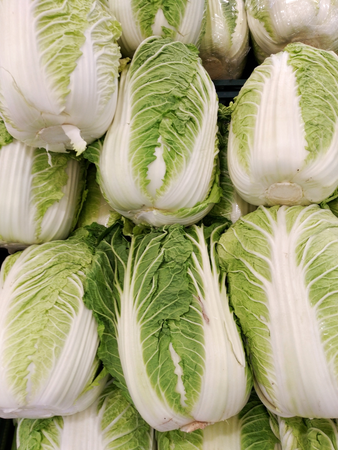
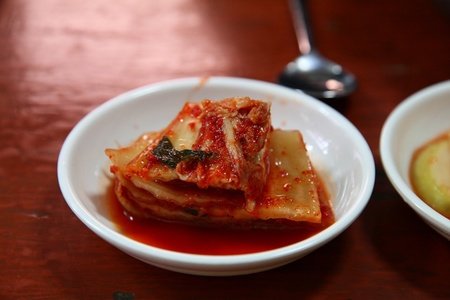
A close relative to bok choy is the Chinese cabbage (or napa cabbage, or "big white vegetable" in Chinese). It is originated from Northern China and eaten throughout East Asia. It is great for its long shelf life (you can wrap it in newspaper and stored in the fridge for weeks) and is a winter staple when many other green vegetables are not readily available in the colder months.
Beside stir fried, it can be used in soup or pickles. The most famous one is the Korean kimchi, a spicy fermented vegetable (usually Chinese cabbage or radish) eaten in every Korean meal as a side dish, or used as ingredient for other Korean dishes (soup or pancake for example).
Water Spinach
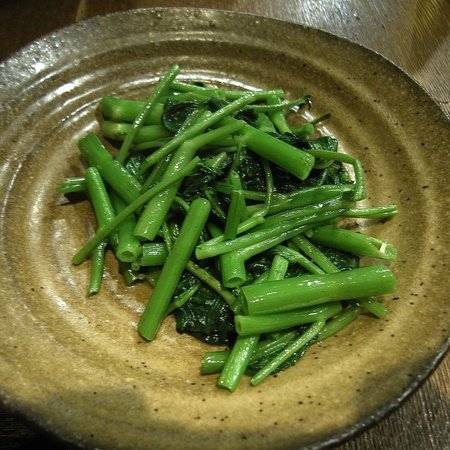
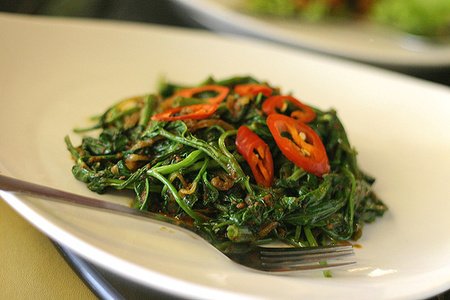
It has many different names. In Chinese it is usually called tung choy (literally "hollow vegetable") or ong choy. In Southeast Asia, it is called kangkung. As the name suggests, it is distinguished by its hollow stem. Opposite to Chinese cabbage, it has a rather short shelf life and can rot easily, so it is best to eat fresh one bought on the same day. It is cooked very quickly and is always stir fried, usually with chilli, fermented bean curd or shrimp paste.
Gai Lan
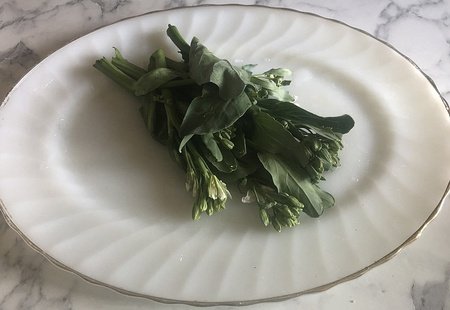
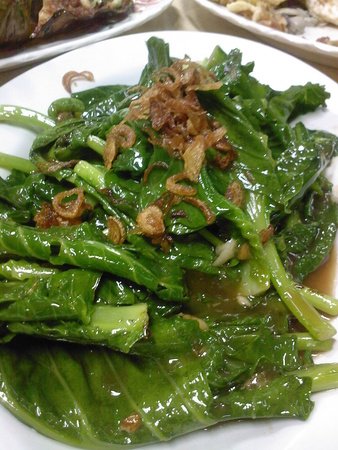
Gai lan (literally "mustard orchid"), or Chinese brocolli, can be distinguished with its thick and crunchy stem. Its flavour is slightly bitter and takes slightly longer to cook (~2 minutes). It can be cooked the same way as choy sum (usually with ginger), and served with oyster sauce on top.
Red Spinach
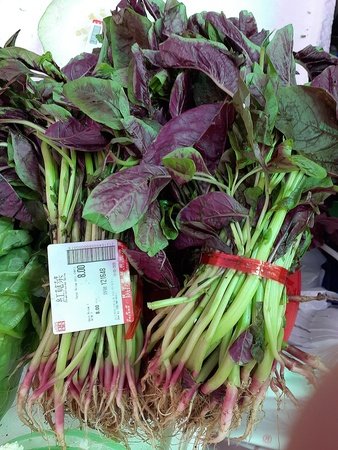
Although it is sometimes called the Chinese spinach, it is actually native to South America. It can be distinguished by its red leaves. When cooked, the water turns red too. It is usually cooked with garlic, and sometimes you can add a century egg to it.
Garland Chrysanthemum
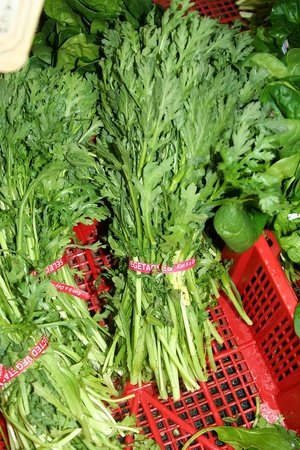
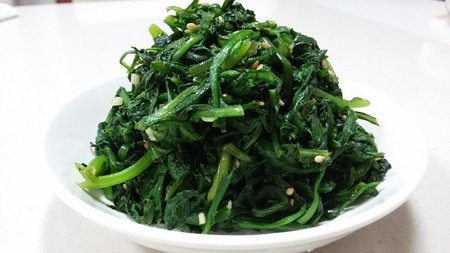
Garland Chrysanthemum, or tong ho in Chinese, is my least favourite vegetable due to its strong smell (like celery but much worse) but I will introduce it here anyway. The plant was originated from Europe and introduced to China during the Song dynasty in the 10th century. Beside stir fried, it is commonly used in hot pot (well most other Chinese vegetables above can be used in hot pot too).
Chinese Mustard
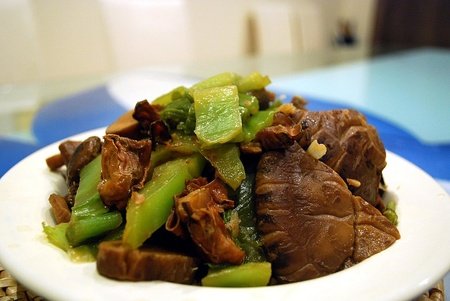
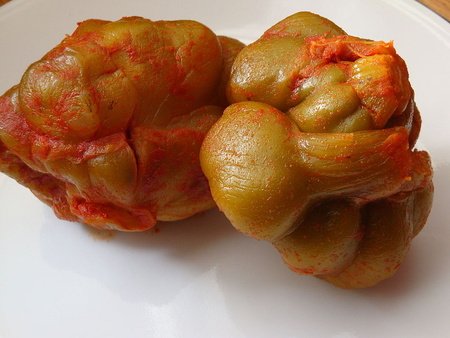
Chinese mustard can be distinguished by its thick and swollen stem and bitter taste. Beside boiled or stir fried, it is commonly pickled into zha cai, which is then used in stir fry or noodle soup etc.
In addition to the above, there are many other green vegetables eaten by Chinese and other Asians, such as lettuce (and Chinese lettuce), English spinach, cabbage, watercress, chives etc. And then there are many other less common Chinese vegetables which I have not mentioned here (sometimes it is hard to find a picture in WikiCommons or Pixabay)
Many of these Chinese vegetables are now available in Western supermarkets, or at least in most Asian grocery stores. If you have never eaten any of these, I would highly recommend you to venture to an Asian grocery store or restaurant and try one yourself. I hope this blog can help you identify these vegetables and learn a bit more about these. And remember, EAT MORE VEGETABLE!
